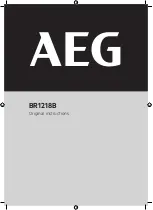
PROGRAMMING
3-5
April 1999
Part No. 001-9800-600
Figure 3-2 Main Window
Title Bar -
Menu Bar -
Status Bar -
Toolbar -
Program Status/
Function Description
Caps
Lock
Num
Lock
Special
Modes
Flash
Memory
Left
Reserved
EEPROM
Memory
Left
Programming Main Radio Parameters
The Main Radio Parameters are parameters that
are the same regardless of which bank/system/group is
selected. They are programmed as follows:
1. Select Edit > Radio Type and the screen that is
displayed programs the Type (mobile, portable),
Tier (high), Frequency Band (UHF, 800 MHz, 900
MHz), and Bandwidth (narrow 12.5 kHz, dual 12.5
and 25 kHz). See Section 3.6.2.
2. Select Edit > Basic Radio Params (Parameters) to
display the screens used to program other radio
parameters. The following parameters are
programmed by these screens:
Basic Parameters - Select the Basic Parameters
screen by clicking the tab at the top. Choose the
desired configuration for each parameter by click-
ing the arrow button or the check box (Section
3.6.3).
Timing Parameters - Select the Timing Parameters
screen by clicking the tab at the top. Choose the
desired configuration for each parameter by click-
ing the arrow button or the check box (Section
3.6.4).
Menu Parameters - Select the Menu Items screen
by clicking the tab at the top. Placing a check in the
box enables the parameter in the menu mode, and
the other box programs the default configuration
(Section 3.6.5).
Key Assignment - Select the Key Assignment
screen by clicking the tab at the top. Click the key
to be programmed and then choose the function for
that key by clicking the arrow button to display the
drop-down list (Section 3.6.6).
Input/Output - Parameters in the Input/Output
screen need to be programmed only if an internal
option such as the compander module is installed
or if an option controlled by the AUX option
switch is installed (Section 3.13).
3. When all parameters in the Radio Parameters
Screens are programmed, click the OK button to
save all changes or the Cancel button to exit without
saving changes.
Locality Programming
In general, a locality is a repeater site. At least
one Locality must be programmed before any Systems
can be programmed and so on for Groups and Banks.
For example, at least one Locality, System, and Group
















































